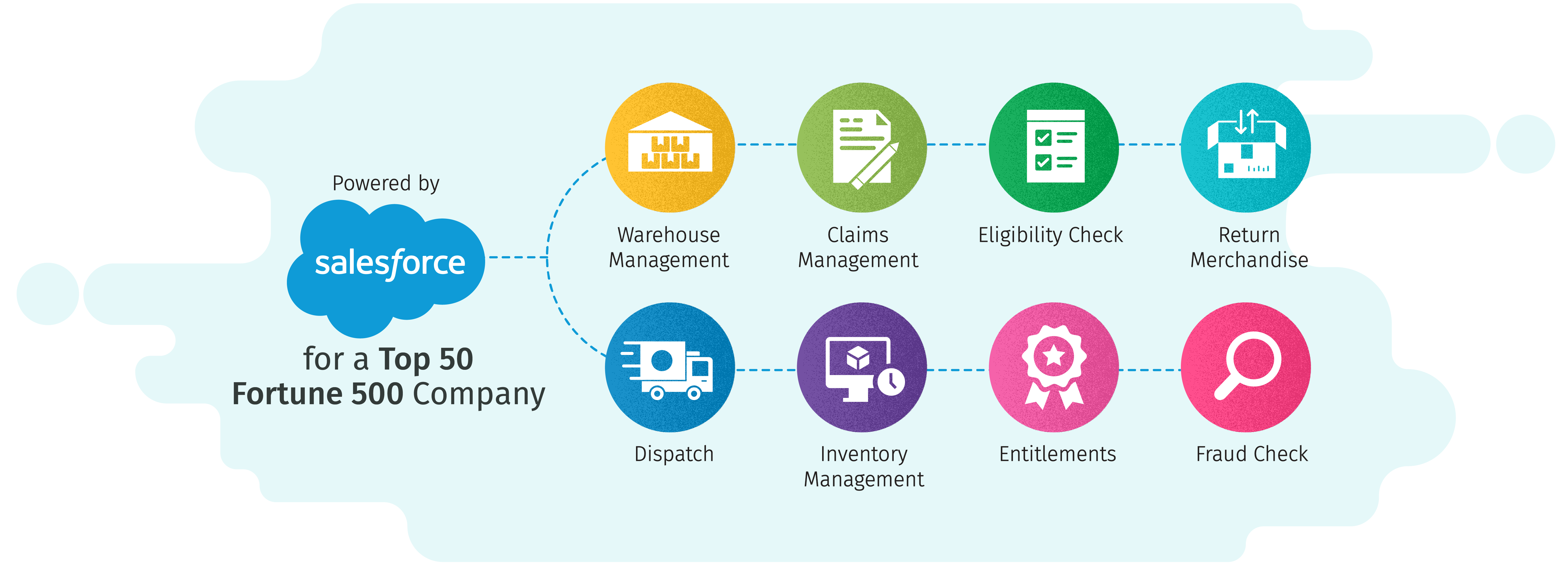The ART of the POSSIBLE with Salesforce Part-I

The ART of the POSSIBLE with Salesforce Part-I
January 12, 2017
“Salesforce.com has come of age.” No matter what statistic you look at, this statement remains true. There are almost 2 billion transactions conducted daily on the platform and the ecosystem boasts over 1.6 million developers.

A core business function modernized using Salesforce at a Fortune 50 client
“Salesforce.com has come of age” No matter what statistic you look at, this statement remains true. The 1st Dreamforce event in 2003 brought together 1300 users and partners – this number was about 175,000 in 2016. There are almost 2 billion transactions conducted daily on the platform and the ecosystem boasts over 1.6 million developers.
As a Systems Integrator focusing on Salesforce.com implementations, we have a different perspective by which we judge Salesforce’s coming of age. We view it through a lens where the KPIs are: complexity of functionality, ease of integration, configuration flexibility, and customization tools available. Back in 2005/6, Salesforce.com started acquiring big name customers. We remember working on early implementations at GE and Coca Cola. In our view, these customers gave Salesforce.com a level of credibility and respect that made others in the Fortune-500 realm sit up and take notice of a company that was largely viewed as a provider of sales management software to SMBs.
Fast forward to today, Salesforce is ubiquitous and has almost become ‘fashionable’ in the industry. Dreamforce takes over the city of San Francisco for almost an entire week, and there are companies highlighting their solutions and products on one of the fastest growing enterprise software marketplace – AppExchange!
Many Salesforce.com customers however, are using the CRM product suite in a limited capacity. Some of this is due to the heavy legacy baggage these organizations carry and a lift and shift approach seems too ambitious; others however, are not fully bought into the level of complexity a Salesfore.com deployment can manage.
These others may benefit from a session highlighting the “Art of the Possible with Salesforce”. Sure, there is a lot of information available during Dreamforce and several events all through the year but sometimes what it takes to covert a skeptic is to show them a real deployment that is similar in scale and complexity to their business.
To highlight what is possible, let me tell you a little bit about a Salesforce.com project that we just went live with for one of our clients – a Fortune 50 tech giant!
We took a core business function – ‘Warranty Management’ and all that it encompasses – sub processes like Eligibility check, entitlements, RMA, fraud check, inventory management, dispatch, and depot/warehouse management and modernized it using Salesforce.com technology. Through the course of this project, we simplified the integration to various back end systems, retired several applications and optimized about a dozen business processes.
The entire function was modernized in a ‘lift and shift’ approach to move from SAP to Salesforce.com and a myriad of other applications, which were seamlessly integrated. The well-coordinated ‘go live’ was global across 11 call centers and handles 100,000 + transactions a month supporting over 30,000 warranty claims for consumer and business customers.

The call center agents went from a swivel chair process spanning 3 different applications to an integrated ‘one view’ of the customer and the associated warranty claim(s), thereby increasing productivity and accuracy of data by 20%.
Of course, customers also have 24X7 access to submit a claim on-line. The on-line process validates the claim request through product serial number check and any eligible claim has a case created and assigned to the appropriate agent pool and depot for managing the RMA process.
Such a project would have taken 16 – 18 months to implement with legacy or premise based applications – we took this from inception to deployment in 8 months!
Fancy replacing an aging CRM/ERP? Or, just want to know a bit more about ‘Art of the Possible with Salesforce’?










